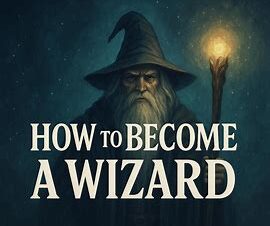“The Renaissance of Wizardry — The Rebirth of Art, Science, and Magus Thought”
🎯 Learning Objectives
By the end of this lecture you should be able to:
- Describe how Renaissance humanism revived the Hermetic and alchemical traditions.
- Identify key “wizard-scholars” such as Ficino, Agrippa, Bruno, and Dee.
- Explain how art and science became sacred acts of imagination.
- Recognize the birth of the “scientific magus,” precursor to the modern wizard-scientist.
- Apply Indigo-Wizard reflection to balance creativity, reason, and spiritual vision.
📜 Lecture Script
1. The World Reawakens
After the long Middle Ages—an era of faith, feudalism, and limited inquiry—the 14th to 17th centuries ignited a rebirth. Ancient texts from Greece, Egypt, and Arabia resurfaced. Printing presses spread ideas like wildfire. Artists painted the human being not as a sinner crawling toward heaven but as a microcosm of the divine.
This movement was called the Renaissance—literally, “rebirth.”
For wizards, it was the return of the light of knowledge.
2. Humanism and the Dignity of Man
Renaissance humanists proclaimed that studying nature, mathematics, and art was not prideful but holy. Humanity itself was seen as a reflection of cosmic intelligence.
“Man is a great miracle.” — Giovanni Pico della Mirandola, 1486
The wizard’s task changed: no longer hiding in monasteries, they walked among kings and merchants, applying wisdom to politics, medicine, and invention.
3. Marsilio Ficino and the New Hermetic Flame
In Florence, Marsilio Ficino (1433–1499) translated the Corpus Hermeticum from Greek to Latin, making the ancient teachings of Hermes Trismegistus available again.
Ficino taught that divine light flows through all things and that beauty—especially music—can heal the soul.
He founded the Platonic Academy, where scholars studied Plato, astrology, and the harmony of the spheres. His work re-ignited Hermetic wizardry across Europe.
4. Giordano Bruno — The Cosmic Visionary
Giordano Bruno (1548–1600) taught that the universe is infinite, filled with suns and worlds beyond counting. To him, every star was a living soul.
He saw magic not as manipulation but as participation in cosmic creativity.
His radical ideas threatened both Church and state; he was executed for heresy.
Bruno’s martyrdom reminds every wizard that truth often demands courage.
For Indigo Wizards, Bruno’s insight—the universe is alive and infinite—foreshadows the modern understanding of consciousness and cosmos as reflections of one another.
5. Heinrich Cornelius Agrippa — The Scholar of Secrets
Agrippa von Nettesheim (1486–1535) systematized magic in his Three Books of Occult Philosophy.
He organized knowledge into three realms:
- Natural magic (science of elements and plants)
- Celestial magic (astrology and mathematics)
- Divine magic (theurgy and prayer)
Agrippa’s “occult philosophy” means hidden wisdom—the study of unseen correspondences that link all planes. His triad still shapes how the Grey School and modern wizardry arrange their curricula.
6. John Dee — The Queen’s Wizard
Dr. John Dee (1527–1608), mathematician, astrologer, and advisor to Queen Elizabeth I, embodied the Renaissance magus.
He coined the term “British Empire,” mapped new worlds, and sought angelic knowledge through scrying.
To Dee, mathematics was a sacred language—the way God measured creation.
His library at Mortlake rivaled universities.
Yet, despite grandeur, Dee’s journals reveal humility: he saw himself as servant of divine wisdom, not its master.
7. Art as Alchemy
Painters and sculptors practiced wizardry through pigment and stone.
- Leonardo da Vinci blended anatomy, geometry, and imagination to reveal nature’s design.
- Michelangelo released form from marble as if summoning spirit into matter.
- Botticelli’s Venus symbolized rebirth of beauty and sacred femininity.
Each artist became an alchemist, turning vision into form—proof that creativity itself is a magical act.
8. Science as Magic Awakening
Renaissance scientists such as Copernicus, Kepler, and Galileo studied the heavens with new tools.
Their discoveries dethroned superstition and placed reason beside revelation.
Wizardry evolved again—from belief to observation.
Alchemy split into two children:
- Chemistry, the science of matter.
- Psychology and mysticism, the science of mind.
Yet both still carry the same Hermetic seed: the search for underlying order.
9. The Indigo Wizard’s Balance
The Indigo Wizard learns from the Renaissance that mind, art, and spirit are one continuum.
Logic without imagination becomes sterile; imagination without ethics becomes chaos.
Balance comes from blending:
- Critical thinking (Aristotle)
- Mystical vision (Hermes)
- Creative expression (Da Vinci)
In your own life, you become Renaissance-like when study, craft, and meditation inform one another.
10. Reflection Exercise
In your journal:
- Which Renaissance figure most inspires you—Ficino, Bruno, Agrippa, Dee, or Da Vinci? Why?
- List three ways you can combine intellect and creativity in daily practice.
- Sketch or describe your own “wizard’s workshop”—a space where art, science, and meditation meet.
11. Closing Meditation
Close your eyes. Imagine walking through a Renaissance study filled with globes, manuscripts, and instruments.
Sunlight falls through stained glass, illuminating a phrase carved in stone:
“Know yourself, and you will know the universe.”
Take a slow breath and whisper:
“I am student and artist, scientist and sage. Through wisdom and beauty, I serve the light.”
Feel the fusion of intellect and inspiration within you—the living spirit of the Renaissance wizard.
(continued in Lecture 2 Part 7: The Scientific Revolution — Wizards of Reason and Discovery)
📚 References
- Frances Yates, Giordano Bruno and the Hermetic Tradition, Routledge, 1964.
- John Dee, Mysteriorum Libri Quinti. (1590s MSS)
- Marsilio Ficino, Letters and Commentaries on Plato.
- Zell-Ravenheart, Oberon. Grimoire for the Apprentice Wizard. New Page Books, 2004.
- Grey School of Wizardry www.greyschool.net
